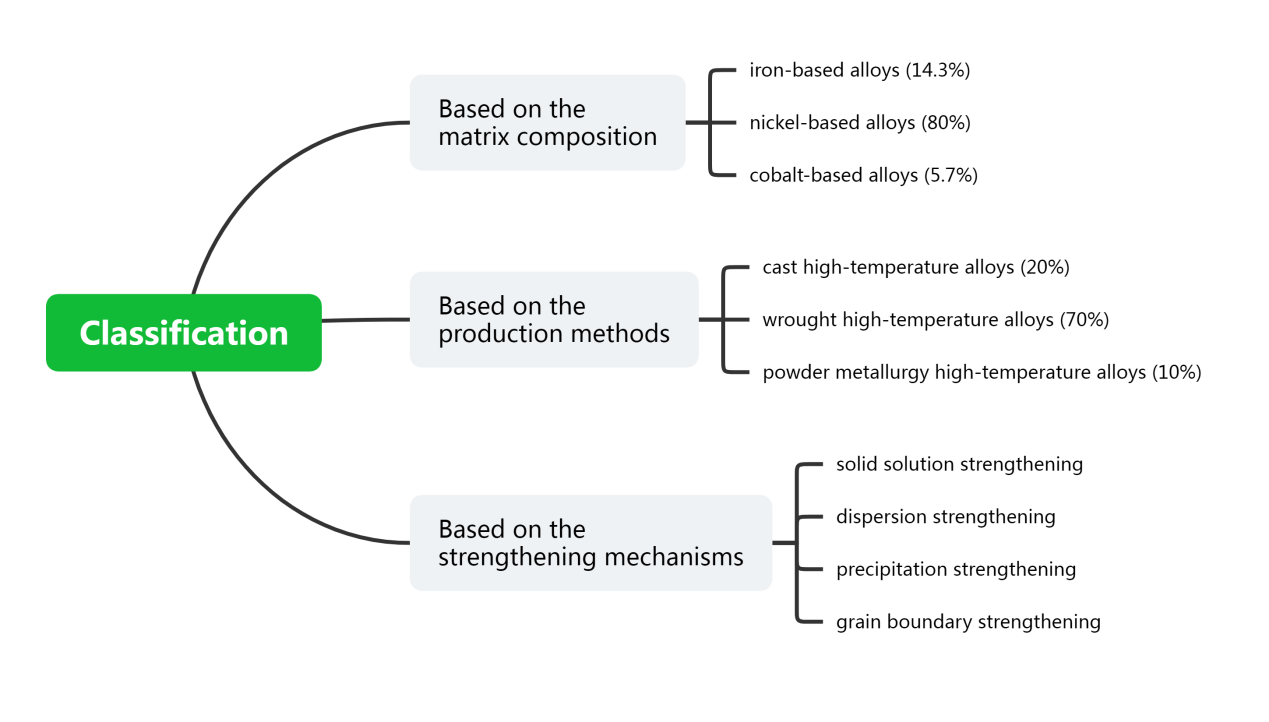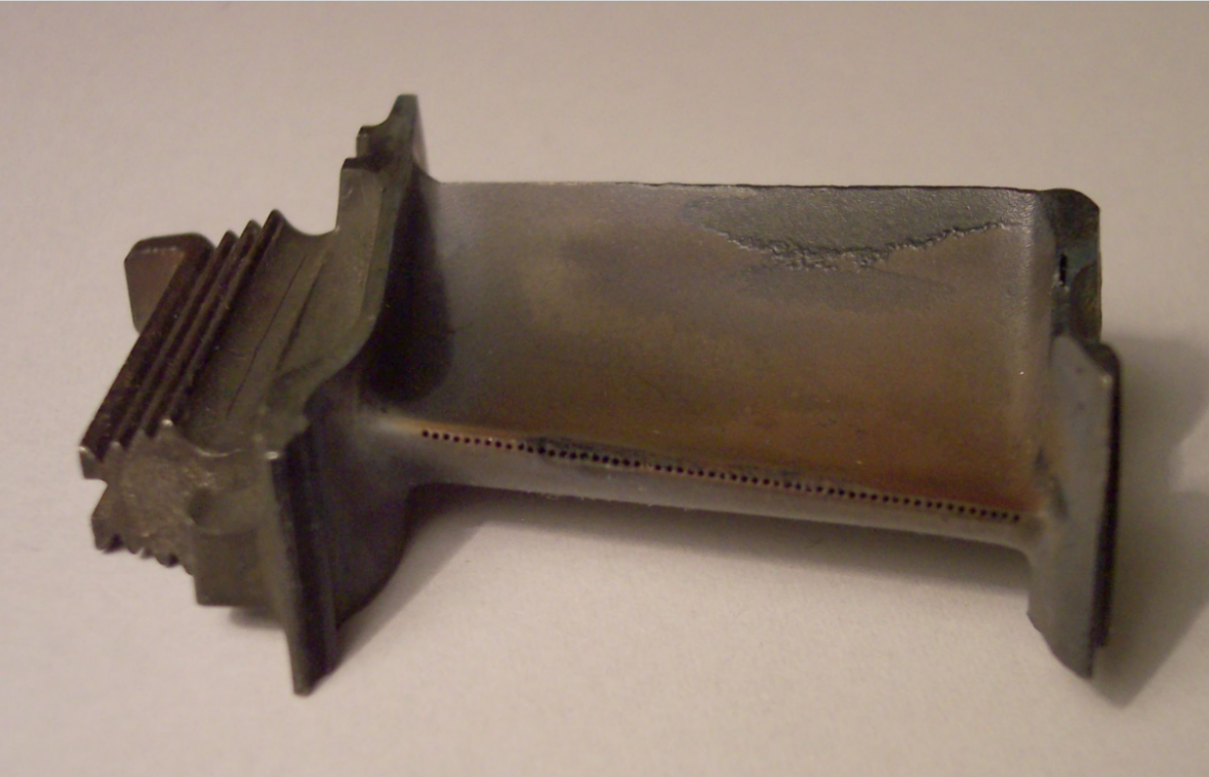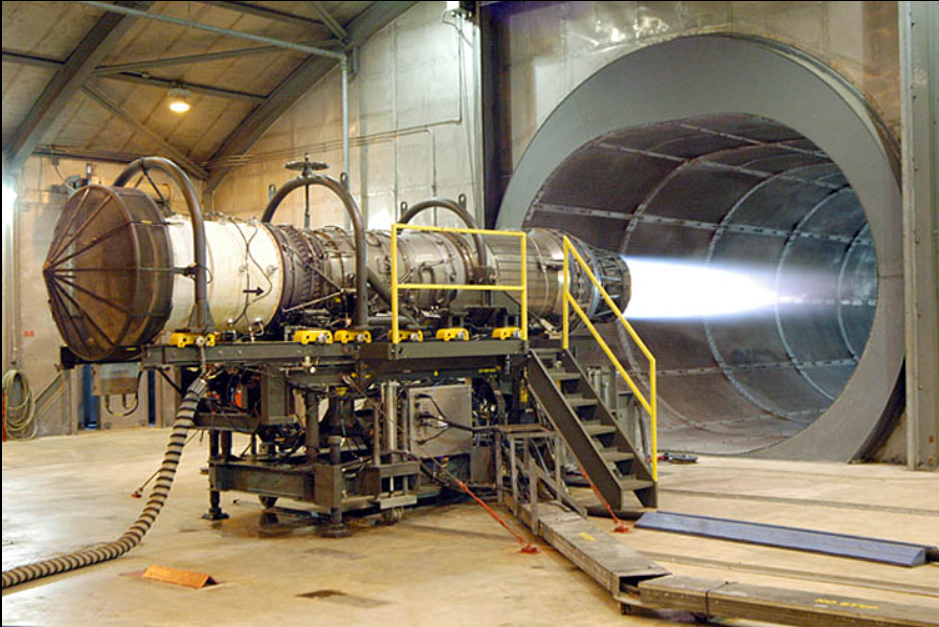The logical relationship - Strengthening Effect(rhenium effect) of Superalloys and Rhenium
- Categories:Application Technology
- Author:
- Origin:
- Time of issue:2023-06-21
- Views:0
(Summary description)High-temperature alloy, also known as heat-resistant alloy or superalloy, refers to a type of metallic material that is composed primarily of iron, nickel, and cobalt. It is capable of long-term operation under high temperatures of 600℃ or above, as well as certain levels of stress. High-temperature alloys possess high strength at elevated temperatures, good oxidation and corrosion resistance, as well as excellent performance in fatigue and fracture toughness. Based on the matrix composition, they can be categorized into three types: iron-based, nickel-based, and cobalt-based alloys. Regarding the production methods, high-temperature alloys can be classified as cast high-temperature alloys, wrought high-temperature alloys, and powder metallurgy high-temperature alloys. Furthermore, they can be strengthened through mechanisms such as solid solution strengthening, dispersion strengthening, precipitation strengthening, and grain boundary strengthening.
The logical relationship - Strengthening Effect(rhenium effect) of Superalloys and Rhenium
(Summary description)High-temperature alloy, also known as heat-resistant alloy or superalloy, refers to a type of metallic material that is composed primarily of iron, nickel, and cobalt. It is capable of long-term operation under high temperatures of 600℃ or above, as well as certain levels of stress. High-temperature alloys possess high strength at elevated temperatures, good oxidation and corrosion resistance, as well as excellent performance in fatigue and fracture toughness. Based on the matrix composition, they can be categorized into three types: iron-based, nickel-based, and cobalt-based alloys. Regarding the production methods, high-temperature alloys can be classified as cast high-temperature alloys, wrought high-temperature alloys, and powder metallurgy high-temperature alloys. Furthermore, they can be strengthened through mechanisms such as solid solution strengthening, dispersion strengthening, precipitation strengthening, and grain boundary strengthening.
- Categories:Application Technology
- Author:
- Origin:
- Time of issue:2023-06-21
- Views:0
High-temperature alloy, also known as heat-resistant alloy or superalloy, refers to a type of metallic material that is composed primarily of iron, nickel, and cobalt. It is capable of long-term operation under high temperatures of 600℃ or above, as well as certain levels of stress. High-temperature alloys possess high strength at elevated temperatures, good oxidation and corrosion resistance, as well as excellent performance in fatigue and fracture toughness. Based on the matrix composition, they can be categorized into three types: iron-based, nickel-based, and cobalt-based alloys. Regarding the production methods, high-temperature alloys can be classified as cast high-temperature alloys, wrought high-temperature alloys, and powder metallurgy high-temperature alloys. Furthermore, they can be strengthened through mechanisms such as solid solution strengthening, dispersion strengthening, precipitation strengthening, and grain boundary strengthening.

Classification and Application Distribution of High-Temperature Alloys
Alloy strengthening characteristics of nickel, iron, and cobalt based high-temperature alloys
- Nickel has a face-centered cubic (FCC) structure and does not undergo allotropic phase transformations. Iron and cobalt, on the other hand, exhibit the FCC austenite structure only at high temperatures. Therefore, alloying elements that expand the austenite phase region need to be added to iron-based and cobalt-based alloys.
- Nickel has high chemical stability, while cobalt and iron have lower oxidation resistance compared to nickel. However, cobalt has better resistance to high-temperature corrosion than nickel. The addition of chromium can significantly improve the oxidation resistance of nickel-based alloys and the high-temperature corrosion resistance of cobalt-based alloys.
- Nickel has the best phase stability, and nickel or nickel-chromium matrices can dissolve a larger amount of alloying elements without forming detrimental phases. Iron has the poorest phase stability, and iron or iron-chromium-nickel matrices can only dissolve a smaller amount of alloying elements, exhibiting a strong tendency to precipitate various harmful phases.
- Iron has the lowest density but the highest coefficient of thermal expansion, and it has good thermal conductivity. Compared to nickel, cobalt has better thermal conductivity and a lower coefficient of thermal expansion, making it exhibit superior thermal fatigue performance.
Based on the above comparisons, it is evident that nickel is an excellent base metal, making nickel-based high-temperature alloys the best-performing series of high-temperature alloys. Cobalt-based alloys exhibit high resistance to heat corrosion and thermal fatigue, allowing them to demonstrate their advantages and have a longer service life. They are suitable for static components that require long-term use at high temperatures and low stresses. Iron-based alloys have a lower temperature range of application compared to nickel-based and cobalt-based alloys. Nickel-based high-temperature alloys have the widest range of applications, while iron-based and cobalt-based high-temperature alloys also have some specific applications.
High-temperature alloy materials are generally used in the manufacturing of high-temperature-resistant materials for aircraft engines, especially for the last two stages of the compressor, the initial two stages of turbine blades, combustion chambers, afterburners, turbine discs, turbine blades, and fasteners. Currently, the market demand is mainly for military products. Due to their military significance, these materials are considered strategic resources and their trade is regulated at the same level as weapons trade. The formulation, manufacturing methods, and processing techniques are highly classified, and major aviation powers conduct research and development under extremely secretive conditions.

A fan blade made of nickel-based high-temperature alloy in the Rolls-Royce Turbo-Union RB199-34R Mk103 turbofan engine.
Single crystal high-temperature alloy refers to an alloy that is composed of individual crystals, with a higher degree of alloying than ordinary high-temperature alloys. By eliminating grain boundaries, it reduces the formation of crack initiation sites, thus overcoming the challenges associated with severe segregation in cast or forged high-temperature alloy ingots, poor thermal processing properties, and difficulties in shaping. As a result, single crystal high-temperature alloys exhibit excellent long-term durability, low creep rates, and good resistance to thermal fatigue.
Since the 1980s, single crystal high-temperature alloys have been continuously developed along their unique path. With advancements in alloy design theories and improvements in production processes, second-generation and third-generation single crystal alloys have emerged, with temperature capabilities approximately 30°C and 60°C higher than the first-generation single crystal alloys, respectively. Representative grades of the first-generation single crystal high-temperature alloys include DD2, DD3, DD4, DD26, DD26C, DD402, DD8, while representative grades of the second-generation single crystal high-temperature alloys include PWA1484, CMSX-4, DD6, DD398, DD5, DD99, MO9A, DD13. The third-generation single crystal high-temperature alloys are represented by grades such as CMSX-10, CMSX-11, ReneN6, TMS-75, TMS-82, DD9, DD10, DD32, DD33, DD90.
CMSX-4 is a second-generation, rhenium-containing, high-strength single crystal alloy developed by Cannon Muskegon Corporation. This nickel-based alloy has a higher peak temperature/stress capability and can operate in environments of at least 2125°F (1163°C). CMSX-4 alloy has been extensively produced and utilized. Blades made from CMSX-4 alloy have demonstrated a fault-free service life of 25,000 to 30,000 hours on the 15,000 horsepower Mars 100 industrial gas turbine. This alloy has gained widespread application globally and has gained significant experience in the manufacturing of industrial gas turbine blades.
Lastly, let's talk about the strengthening of high-temperature alloy materials. All high-temperature alloys contain multiple alloying elements, sometimes ranging up to several tens of elements. These alloying elements contribute to a series of alloy strengthening effects.
- Alloy Strengthening: The addition of multiple alloying elements interacts with the base elements (nickel, iron, or cobalt) to produce strengthening effects, including:
- Solid Solution Strengthening: Alloying elements dissolve in the base matrix, causing lattice distortion and increasing strength.
- Second-phase Strengthening (Precipitation Strengthening and Dispersion Strengthening): The formation of precipitates or dispersion of fine particles within the matrix enhances strength.
- Grain Boundary Strengthening: Alloying elements can strengthen the grain boundaries, improving resistance to deformation.
- Process Strengthening: By adopting new processes or improving steps such as refining, solidification, heat treatment, and surface treatments, the alloy's microstructure can be optimized, resulting in strengthening effects.
- High-temperature alloy strengthening = Alloy strengthening + Process strengthening.
Among all the elements that contribute to alloy strengthening in high-temperature alloys, there is one element that plays a crucial role that cannot be overlooked, and that is rhenium. We can use the following analogy to describe the role of rhenium in high-temperature alloys: Before rhenium is added to the alloy, it is like a team of scattered infantry armed with rifles; however, once rhenium is introduced into the high-temperature alloy, it instantly transforms into a formidable space army with the ability to confront the challenges of time and space.
Rhenium, symbol Re, is a chemical element with atomic number 75 and atomic weight of 186.207 u. It is a silver-white, high-density transition metal belonging to the 6th period of the periodic table. Rhenium is one of the rarest elements in the Earth's crust, with an estimated average abundance of one billionth. It is also one of the elements with the highest melting and boiling points. Rhenium is a byproduct of molybdenum and copper refining processes. It exhibits chemical properties similar to manganese and technetium, and it can have oxidation states ranging from -3 to +7 in compounds.
Scientists discovered the element rhenium in 1925, making it the last stable element to be discovered. Its name, "rhenium," is derived from the Latin name for the Rhine River in Europe. Rhenium is one of the rarest elements in the Earth's crust, with an average abundance of about one billionth. When ranking the elements by abundance in the Earth's crust, rhenium occupies the 77th position, indicating its low occurrence compared to other elements.
Nickel-based alloys with rhenium can be used to manufacture combustion chambers, turbine blades, and exhaust nozzles in jet engines. These alloys typically contain up to 6% rhenium, which represents the largest practical application of rhenium. Another significant application of rhenium is as a catalyst in the chemical industry. Rhenium is even rarer and more difficult to obtain than diamonds, which makes it expensive. In August 2011, the average price of rhenium was $4,575 per kilogram ($142.30 per troy ounce). Due to its use in high-performance jet and rocket engines, rhenium holds great importance in military strategy.
The addition of rhenium enhances the creep strength of nickel-based high-temperature alloys. Nickel-based high-temperature alloys typically contain 3% to 6% rhenium. The second-generation nickel-based high-temperature alloys have a rhenium content of 3% and have been used in engines for F-16 and F-15 fighter jets. The third-generation single-crystal nickel-based high-temperature alloys have a rhenium content of 6% and have been used in engines for F-22 and F-35 aircraft. Rhenium-containing nickel-based high-temperature alloys are also used in industrial gas turbines.
The introduction of rhenium in high-temperature alloys leads to the formation of topologically close-packed phases (TCP), which can cause microstructural instability. Therefore, fourth-generation and fifth-generation high-temperature alloys have started to incorporate and utilize the addition of ruthenium to mitigate this undesirable phenomenon.

The F100 turbofan engine utilizing second-generation nickel-based high-temperature alloy with rhenium.

The CFM56 jet engine using nickel-based high-temperature alloy with 3% rhenium content.
According to historical statistics, in 2006, the consumption of rhenium in the field of high-temperature alloys was distributed as follows: General Electric accounted for 28%, Rolls-Royce Limited accounted for 28%, Pratt & Whitney accounted for 12%, all used for the production of nickel-based high-temperature alloys. Additionally, 14% was used as catalysts, and 18% had other uses. Due to the continuous increase in demand for military jet engines, many military research institutions are developing high-temperature alloys with lower rhenium content to maintain low-cost supply. For example, the new CFM56 high-pressure turbine (HPT) blades use an alloy with 1.5% rhenium content to replace the alloy with 3% rhenium content.
Due to its significant enhancing effect on the overall performance of alloy materials in various high-temperature alloys, rhenium plays a crucial role. Rhenium not only synergistically improves the properties of nickel-based alloys but also exhibits remarkable alloy strengthening effects in materials based on tungsten, molybdenum, cobalt, titanium, and even steel. Moreover, considering the future development trends in high-temperature alloy technology, it becomes increasingly evident that high-performance high-temperature alloys cannot do without the addition of rhenium. However, given the extremely limited availability of rhenium resources on Earth, achieving a cost-effective utilization of rhenium often requires its incorporation in trace amounts, while still exerting a significant alloy strengthening effect. It is believed that in many advanced equipment of the future, rhenium will be applied in more accessible ways to benefit a wider audience.
Scan the QR code to read on your phone
Contact Us
Address: Room 401, Building 10, Xinggong Science and Technology Park, No. 100 Luyun Road, Changsha High-tech Development Zone, Hunan
Email:sales@rheniumet.com

scan it Follow us
Copyright: Hunan Rhenium Alloy Material Co., Ltd. ICP No. 13005464-1 Website construction: www.300.cn



